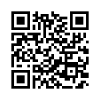Journal Diksi, originally named Diksi Majalah Ilmiah Penelitian Bahasa dan Seni [Diksi Scientific Magazine of Language and Arts], was first published in January 1993 by the Faculty of Languages and Arts Education of the Institute of Teacher Training (IKIP), based on the decree of the Dean No. 009 of 1992 dated November 2, 1992, and certified by ISSN 0854-2937 for the print edition, with editor-in-chief Drs. Suminto A. Sayuti until 2000. Drs. Djoko Maruto was the designer of its cover. It was published twice annually, in May and September.
Based on the Decree of the Dean No.79 of 2000 dated August 28, 2000, the Diksi of The Scientific Magazine of Language and Art Research changed its name to Diksi of Scientific Magazine of Language and Art. It began publication once every two years with editor-in-chief Drs. Kusman Abdi, M.A. Removing the word 'research' on Diksi is intended to accommodate critical conceptual articles.
Since the publication of Vol. 9, No. 19, in January 2002, based on the decision of the editorial board, the name of the journal changed to Diksi Jurnal Ilmiah Bahasa, Sastra, dan Pengajarannya under editor-in-chief Sutrisna Wibawa, M. Pd who then switched to Dr. Zamzani in 2004 to 2007, and then in 2007 - 2010 led by Kastam Syamsi, M. Ed, and continued by Dr. Teguh Setiawan, M.Hum in 2014 - 2017. In 2017, based on ISSN Issuance Decree No. 2579-6399, Online Diksi Journal was registered under the name Diksi starting Vol. 25, No. 1, April 2017. Beginning in 2018, Diksi, a journal of language, literature, and teaching, is led by Prof. Dr. Anwar Efendi, M.Si, who strives to grow synergistically by improving the quality of published articles twice every year, March and September. For that, some changes related to publications online and in print are made.
The online journal system (OJS) is optimized with several changes related to the journal template, especially starting in March 2022. Improvements are made to accommodate inputs based on the results of previous accreditation assessments. Since then, the use of English also began to be applied to expand to reach the journal's readability. In addition, we also refer to the guideline of APA 7th edition as a bibliography in the articles.
Hopefully, we can serve better for the contribution of knowledge and education in general, and in language, literature, and its teaching especially.

2.png)














